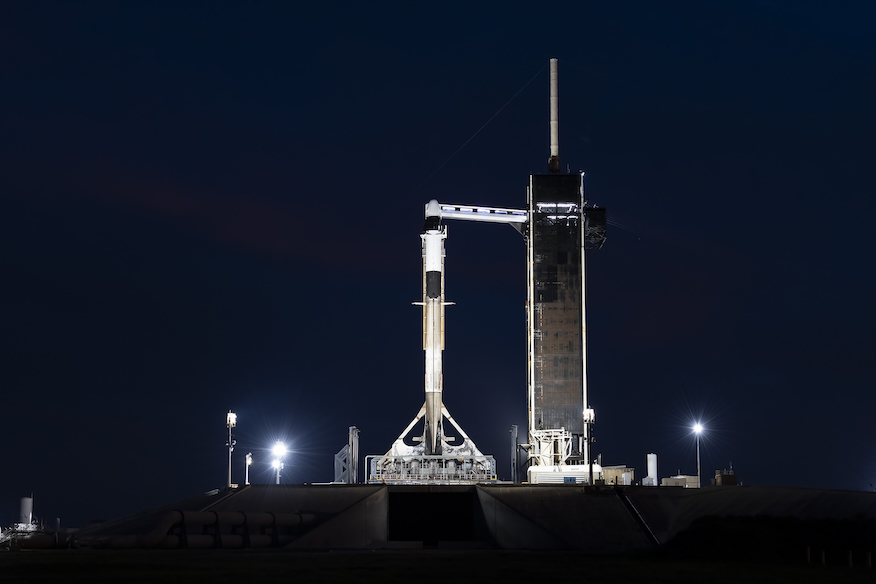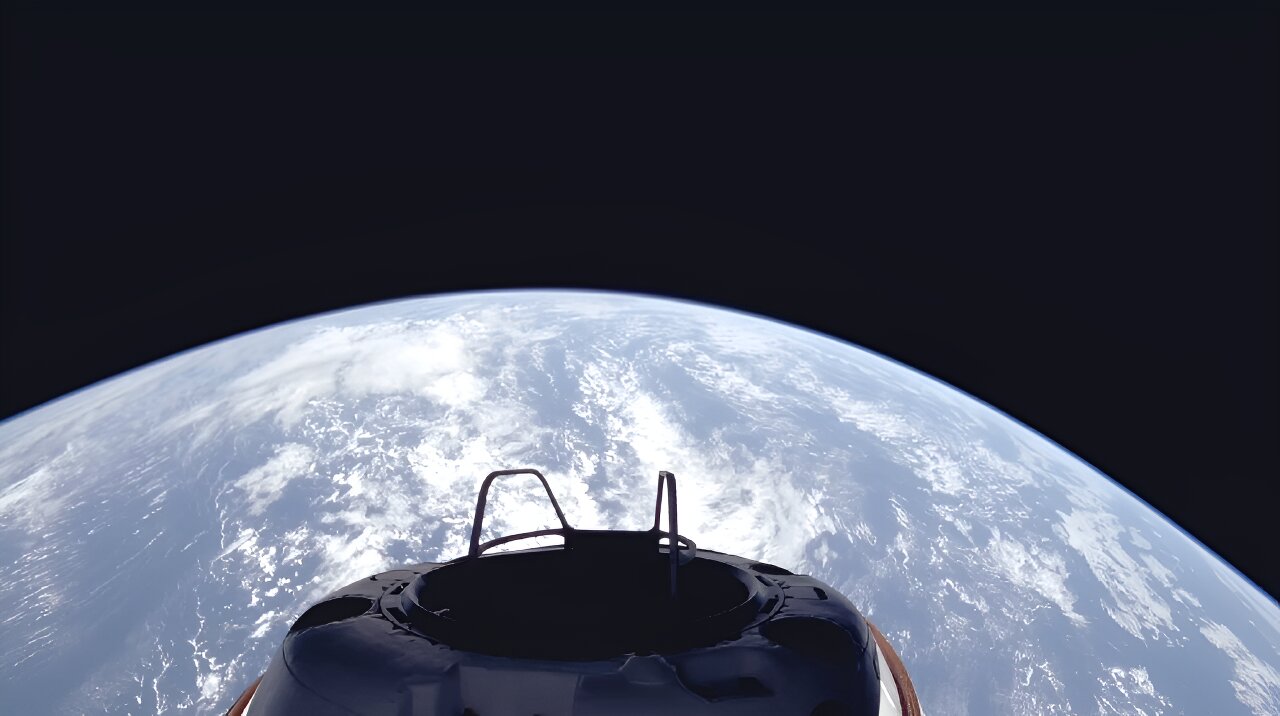SpaceX is preparing to try one again to launch the Polaris Dawn commercial astronaut mission, even as weather continues to prove challenging in Florida.
The company announced that it hoped to launch the four astronauts onboard its Crew Dragon spacecraft, named ‘Resilience,’ no earlier than Tuesday at 3:38 a.m. EDT (0738 UTC). However, weather conditions at liftoff are only 40 percent favorable for launch, according to SpaceX.
Spaceflight Now will have live coverage beginning about four hours prior to liftoff.
Polaris Dawn, the first of three planned missions within the Polaris Program, will feature the first commercial spacewalk, an on-orbit demonstration of Starlink and sending its crew further than humans have gone since the end of the Apollo era.
Its crew consists of entrepreneur Jared Isaacman, former U.S. Air Force pilot Scott ‘Kidd’ Poteet and SpaceX employees Sarah Gillis and Anna Menon. Gillis and Menon will become the first SpaceX employees to travel to space.
The mission is a free-flying flight of Resilience, which will last a little more than five days in total. Because of that, SpaceX also needs to have good recovery weather for splashdown off the coast of Florida.
Following an initial ground systems issue during the first launch attempt, splashdown weather has been the sticking point that kept this mission from lifting off up until now. In its post announcing the new target launch date on X, formerly Twitter, SpaceX said that “conditions at the possible splashdown sites for Dragon’s return to Earth remain a watch item.”
“This is a big improvement over the last two weeks,” Isaacman said in a post on X. “We are getting closer to getting this mission to orbit.”
As of 4 a.m. EDT (0800 UTC) on Monday, the National Hurricane Center based in Miami, Florida, was tracking two tropical disturbances in the Atlantic Ocean that are tracking to the west. It listed one of those as having a 60 percent chance of forming into a tropical cyclone over the next 48 hours and 70 percent chance of formation over the next seven days.
“An area of low pressure is producing disorganized showers and thunderstorms over the central tropical Atlantic,” the NHC wrote. “Environmental conditions appear generally conducive for development during the next few days, and a tropical depression is expected to form while the system meanders over the central tropical Atlantic.
“By the middle of the week, the system should begin move westward-northwestward at around 10 mph.”

The Falcon 9 rocket supporting the mission, tail number B1083 in the SpaceX fleet, will launch for a fourth time on this flight. It previously supported the Crew-8 mission to the International Space Station as well as sending two batches of SpaceX Starlink internet satellites into low Earth orbit.
With the Crew Dragon spacecraft stacked on top, the launch vehicle stands at 65 m (213.3 feet) tall. Named ‘Resilience,’ the Dragon will be making its third trip to space after launching both the Crew-1 mission and Inspiration4, Isaacman’s first voyage beyond Earth.
Because Resilience will be launched into a 190 x 1,200 km (118 x 746 mi.) orbit at a 51.6 degree inclination, B1083 will land on the SpaceX droneship, ‘Just Read the Instructions,’ about 9.5 minutes after liftoff.
Time is running out for the mission to launch in early fall though. NASA needs SpaceX to start readying the pad at Launch Complex 39A for a Falcon Heavy launch. That rocket is needed to launch NASA’s Europa Clipper mission on its way to the Galilean moon of Europa.
The planetary launch window opens up on Oct. 10 and it will take weeks for the conversion at the pad from a Falcon 9 to a Falcon Heavy configuration.
“SpaceX continues to improve and reduce the LC-39A pad conversion processing timelines when changing configuration between Falcon 9 and Falcon Heavy,” said Tim Dunn, the senior launch director for NASA’s Launch Services Program. “LSP will utilize these improvements for the Europa Clipper mission. The exact number of days required for the configuration change has not been finalized but it will be less than 25 days.”
This is a big improvement over the last two weeks. We are getting closer to getting this mission to orbit.
— Jared Isaacman (@rookisaacman) September 9, 2024





No comments! Be the first commenter?